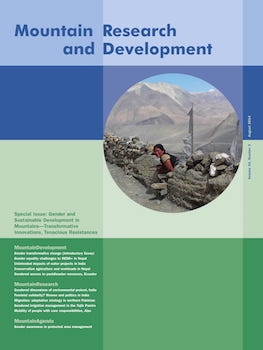Large Dams in Asia: Contested Environments Between Technological Hydroscapes and Social Resistance, edited by Marcus Nüsser. Berlin, Germany: Springer, 2014. xiii + 175 pp. US$ 129.00. ISBN 978-94-007-2797-7.
Large dams have been debated controversially for several decades due to their large-scale and often irreversible social and environmental impacts. While dams were considered as powerful symbols of modernity and development throughout much of the 20th century, the displacement of tens of millions of people worldwide, the unequal distribution of costs and benefits, and severe environmental damage (WCD 2000) led to a global decline in dam-building in the 1990s and early 2000s. Some even claim that “dam has been a dirty word for years” (The Economist, 2009:1). In the light of climate change, however, hydropower is experiencing a renaissance in many parts of the world, as it is viewed as a cost-effective, low-carbon energy source. Studying the rise, fall, and renaissance of large dams is therefore an important and timely endeavor.
Large Dams in Asia examines the long-standing dams debate from the perspective of “contested development paradigms across changing historical and political contexts” (p 2). The book addresses contentious and controversial dam and water management issues in a nuanced, balanced, but still critical way. Looking beyond technocratic narratives and technological fixes, it highlights political, socioeconomic, and ecological aspects of dams and hydro-engineering.
Chapter 1 by Nüsser on “Technological Hydroscapes in Asia: The Large Dams Debate Reconsidered” provides an insightful and well-informed account of the modern history of dam building from various political, social, environmental, and technological perspectives. It explores the short-lived decline of dam building and the current renaissance due to climate change considerations.
In Chapter 2, on “Misplaced Knowledge: Large Dams as an Anatopism in South Asia,” Baghel analyzes the logic of large dams, taking into account geographic, political, and sociological considerations. He concludes that large dams are fundamentally in conflict with local conditions. To illustrate his argument, he refers to the fact that hydrological models for dam engineering are based on the hydrological experiences of even-flowing perennial rivers in northern and central Europe and the eastern United States. Accordingly, they are based on annual stream flow and rainfall averages rather than seasonal data, although seasonal data would be more suitable for South Asia's climate, which is characterized by monsoons and seasonal aridity. Baghel uses this and other examples to challenge the “universal replicability” (p 24) of dams and the undifferentiated treatment of conditions that are not applicable to South Asia. He concludes that, rather than discussing whether dams are good or bad, differentiations of space and time need to be acknowledged to assess whether large dams are appropriate for particular geographic locations and timescales.
Several of the chapters discuss the perceived mismatch between bottom-up, local knowledge and traditional water management practices versus top-down, nationally driven engineering approaches. In Chapter 4, “Filling Multipurpose Reservoirs with Politics: Displacing the Modern Large Dam in India,” D'Souza concludes that the “ideology of supply-side hydrology” for addressing water scarcity was used as a justification for engineering large dams, rather than working with local water conservation efforts and indigenous water knowledge traditions (p 70). In Chapter 7, “Rivers, Dams and Landscapes: Engaging with the Modern on Contested Grounds,” Werner discusses competing visions of development and the ideologies associated with them. She concludes that local technology, local infrastructure, and indigenous knowledge can offer an important additional approach to evaluating large dam projects beyond cost–benefit analysis.
Erlewein, in Chapter 8, writes on “The Promotion of Dams Through the Clean Development Mechanism: Between Sustainable Climate Protection and Carbon Colonialism” and questions the ability of large dams to contribute to climate change mitigation and sustainable development. He rejects the categoric “carbon-colonialist” claims for all dams registered with the Clean Development Mechanism (CDM), and he differentiates the dams according to their ability to prove their contribution to sustainable development, greenhouse gas emission reduction, and additionality. The chapter concludes by suggesting a reform of the CDM: Large dams should not be funded, and sustainability standards need to be binding under the CDM. While these discussions are embedded in the understanding that the CDM should benefit poor countries, the chapter omits the fact that it is the emerging economies of the global South that have taken the lead in dam building in recent years, and that most CDM-registered dam projects are found in China, India, and Brazil. The CDM is therefore only used as a mechanism for levering further funding domestically in these countries. Moreover, the CDM represents only a small share of the installed hydropower capacity in the global South.
The book is generally rich in material from India and South Asia, whereas China is represented only in Chapter 3 by Seeger. Yet China is today's global leader in dam building, both domestically and overseas, in terms of the number and size of dams built, the sums invested, and the extent of global coverage. It is estimated that China has 45,000 large dams on its own territory (McDonald et al 2009), and that Chinese dam builders have constructed more than 300 large dams overseas in more than 70 countries—the majority after 2000 (International Rivers 2013). The massive surge in dam building in Southeast Asia receives no attention in this edited volume either, although there are a number of large and often controversial dam projects across Myanmar, Laos, Malaysia, Cambodia, and other Southeast Asian countries, many of them funded and built by the Chinese (Urban et al 2013).
Despite these minor shortcomings, as a whole, this book is very nuanced and well-informed and provides a multifaceted view of complex, contentious issues around dams and water management in Asia. It makes for an enjoyable and insightful read that should be part of the reading list for anyone with an interest in dams, hydropower, and water management. While it addresses the contentiousness and topicality of dams from its origins to today, it also provides alternatives for the future and lessons from the past.
Open access article: please credit the authors and the full source.





